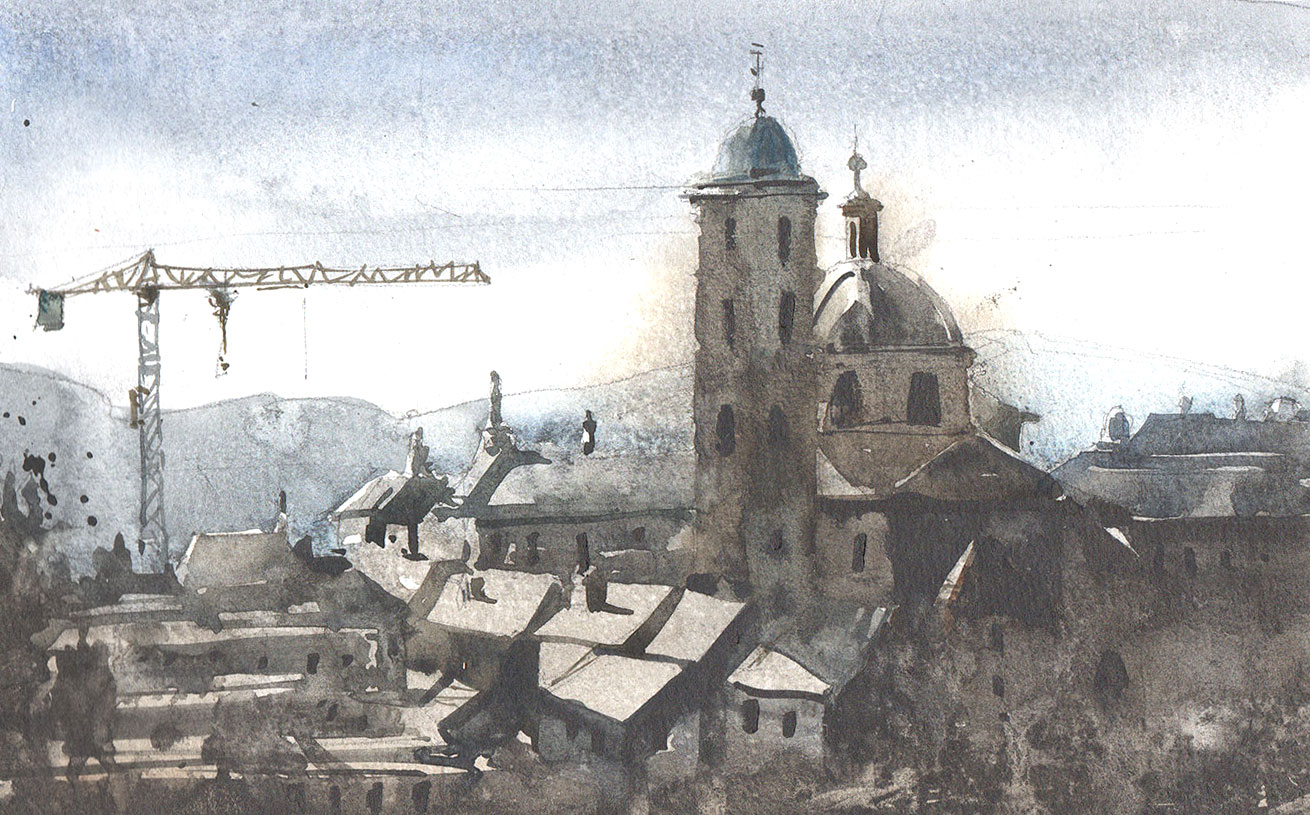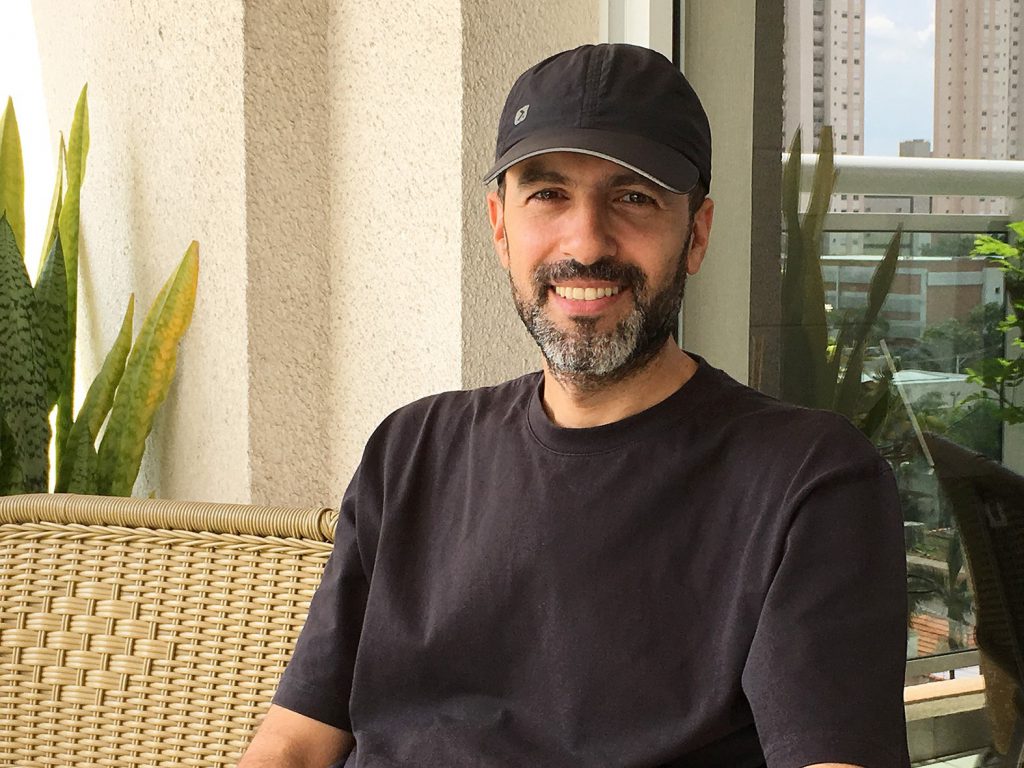
Renato Palmuti is a Brazilian artist, illustrator and designer. In 2005, he founded his own studio after working as an illustrator, studio head, and art director for several advertising and promotion agencies in Brazil and around the world. His practice of the watercolour technique has taken him from a more technical approach to a more artistic one, which he has then incorporated into illustration projects, life model studies, and his personal work.
In addition to teaching drawing and watercolour painting courses and workshops, he also consults with companies and institutions. In addition to teaching for the Urban Sketchers group, he is the Brazilian co-representative of the International Watercolor Society.
It was a pleasure for us to interview Renato and find out how he acquired his artistic skills, why he decided to lead his own workshops and courses, and the Urban Sketching community in general. Have fun reading!
Were you always artistically talented or did you have to work hard for it? Where does your creative streak come from?
I believe some people have kind of a gift, but I think it’s really rare. What is commonly called talent I call will. To overcome difficulties, and frustrations, and keep on searching for your visions, takes strength and desire. So I think I have this strength and desire. This is what motivates me to work hard and be disciplined in order to accomplish my goals.
Did you have a role model or a teacher who taught you everything?
I had no teachers and at the same time, I have a lot of them. I haven’t made classes or courses to learn how to paint, but I started learning from my heroes. Artists that I have never met but were always inspiring me, like Boris Vallejo, Frank Frazetta, Hajime Sorayama, Joseph Zbukvic, John Singer Sargent, and many others. I bought a lot of videos and studied great artists from the watercolor scene and concept art industry. Always by myself.
But I am happy to learn from almost everything. I learn from these masters, from my colleagues, and I learn a lot from my students too…with their hits and misses.
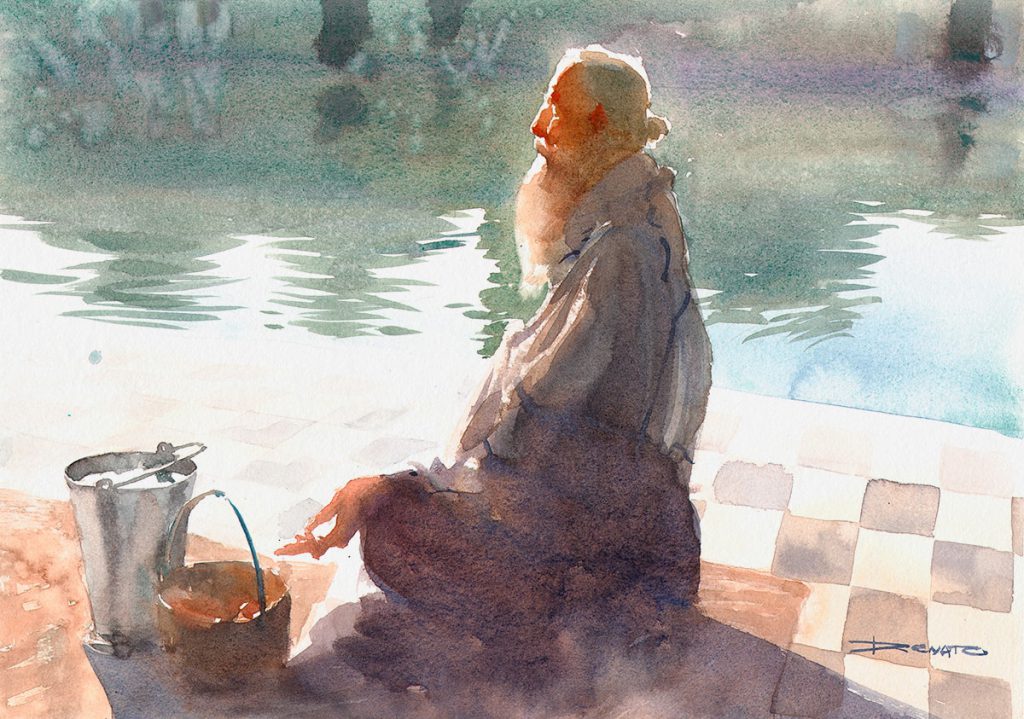
Next to being a well-known, successful artist, you also became a teacher. What inspired you to become a teacher and pass on some of your knowledge to beginners?
I worked as an illustrator and art director for many years and it is quite a lonely job. It’s difficult to share experiences and processes in this market and I didn’t know how to sort it out. I confess I had never thought about becoming a teacher. But as I started being invited to workshops and classes due to my consistent work with watercolours I found out it could be the opportunity for being in contact with people who wanted to learn something I wanted to share. And to my surprise, the students found a teacher inside me.
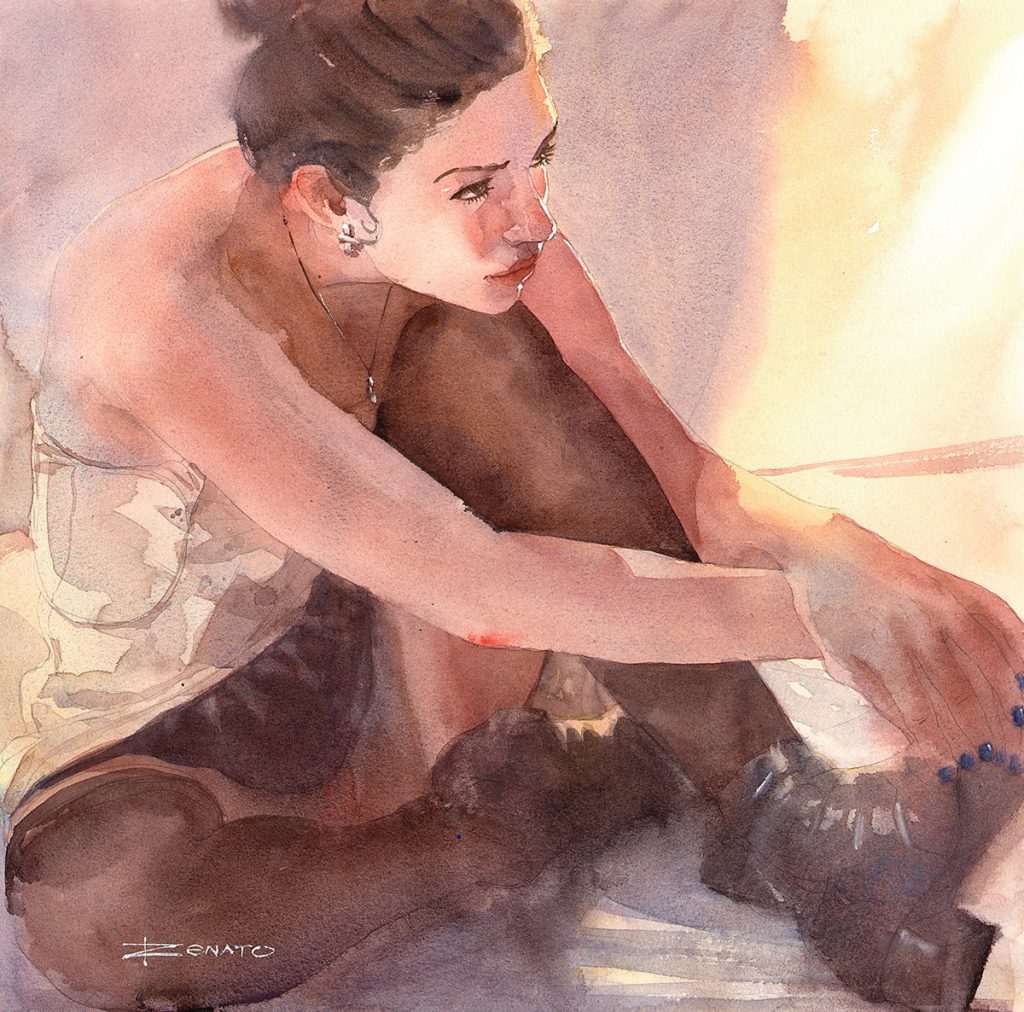
You have already received several awards for your work. Are you proud of this and does it perhaps spur you on to teach your students some of your expertise in the courses?
It’s always good to receive recognition for my work. But what really makes me want to teach is the interest of the students. I am very happy to be a teacher who is always well received, well treated and I know that everything I have to say it’s something the students wants to hear. That’s what really spurs me to teach.
What is your favourite part of being a teacher?
I think the favorite part is the people I know. It’s impressive how my contacts have grown since I started teaching. I can notice that the most of my friends, followers or partners today came from this teaching activity.
Has the pandemic had an impact on your work/business?
Sure. With the pandemics, the digital culture imposed itself on the globe! And as people started accepting content coming through the screen as something real, it was an opportunity to be present in other ways. I remember when somebody talked with me about life during the pandemics. And on a Sunday afternoon, I decided to make a test and paint something in front of my mobile phone. I said some words, cause maybe there would be somebody following. And when I finished I saw like 450 people watching my small painting and seeing my sandals on the floor… Of course today the big offer of these live videos dissolves the audience, but it showed me that I could increase my presence on social media and reach more people than before. And although I deeply regretted not being able to be with friends and students, I could teach people from all over the country and even the world.
The urban sketching community is already huge and present all over the world. What do you think about its growth and development in recent years?
I think it’s amazing! As an Urban Sketcher’s instructor, I could see lots of people having a special moment in their activities. For me, the greatest thing about going outside and registering a moment is related to being present at that time! Something like a meditation…
People are finding out they can be with themselves, being aware of a moment just by drawing or painting. They don’t need any sophisticated equipment, they don’t need to pay anybody and they don’t need to prove anything. It’s just sitting down, feeling the place, and putting something they consider interesting on paper. That’s great!
Will you be attending the USK Symposium in Auckland next April?
I really want to. For sure I’ll consider it on my agenda for the next year. And if it’s possible I’ll prepare a workshop proposal for the educational team to evaluate. Let’s see…
Are there different approaches to urban sketching/watercolour painting in countries?
There are some characteristics in some places. I can notice something more contemplative in the eastern styles and maybe more technical in the western countries, but nowadays the global influence is so fast and so strong that artists are influencing each other in real-time. The sketchers are discovering what the “Plein air” artists have been exploring for centuries and lots of studio artists are gathering with sketching groups to draw and paint outdoors. So it’s a good fusion of influences, and we are lucky to live in this time when we can see all the things they are doing.
Which Hahnemühle paper do you like the most and why?
That’s a difficult question…If I had to say just one, I would say The Collection Watercolour cold pressed, cause it’s the surface that allows me to reach the largest amount of results and it resists the hardest work considering layers and the amount of water. But I always say that the paper has to be adequate for the task. So I have been using some other papers for faster results. For sketching and also paintings with just a few layers, for example, I like to use Bamboo, Mixed Media, and Veneto which allows me a pleasurable painting too.
We are curious, what’s up next?
Well, I want to dedicate some energy to my personal artwork. I’m developing themes for some series of paintings related to new readings and studies I have been doing. Maybe I’ll consider working with some prints of my work too.
For the classes, I feel that lots of students need some basic teachings before starting a painting routine. Because of that, I am planning a beginner’s course in the video to meet this demand. And for sure I’ll continue with my faithful groups working with various themes in watercolor and sharing my passion for painting with all of them!
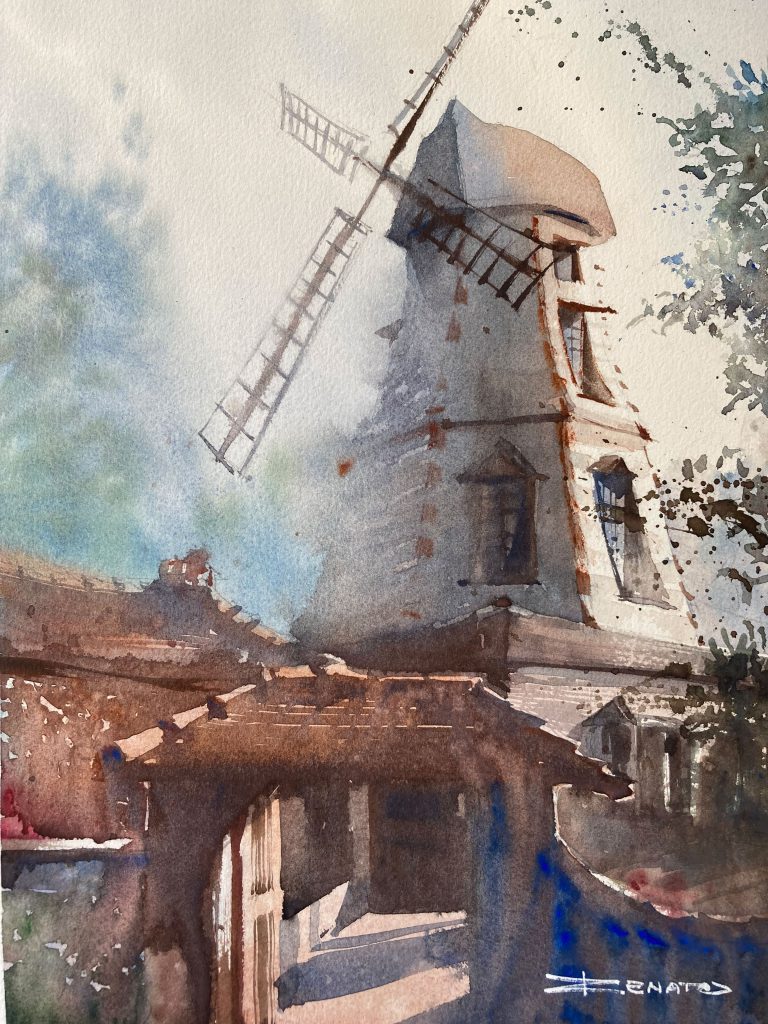
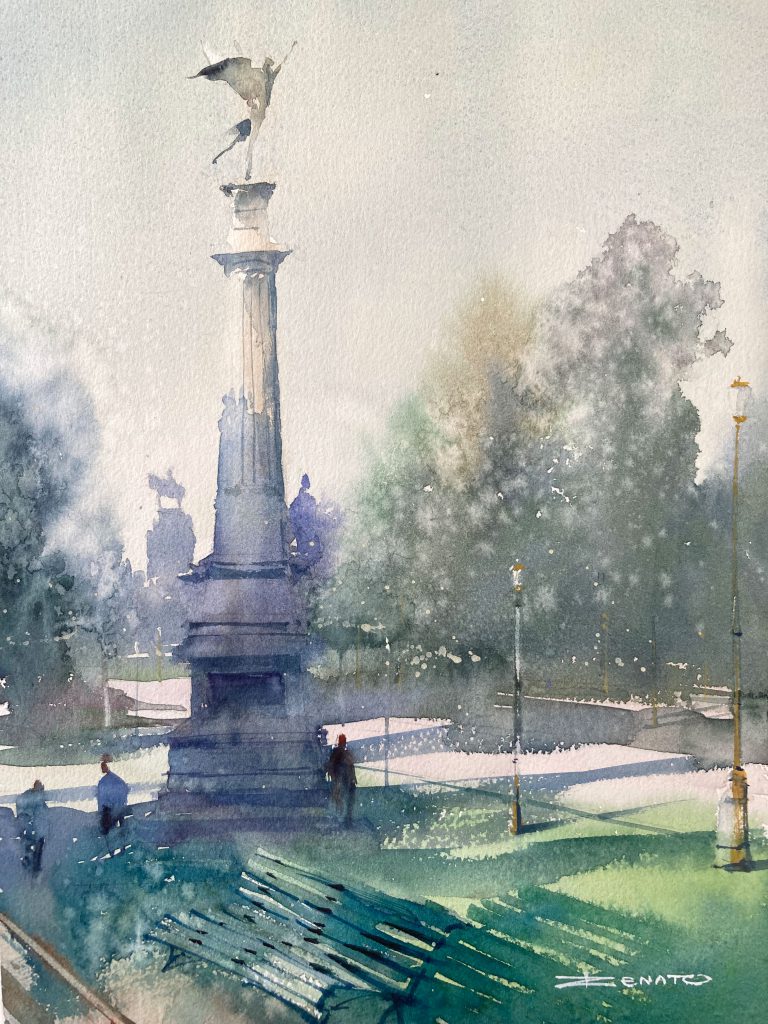
Thanks for your time and the great interview, Renato!
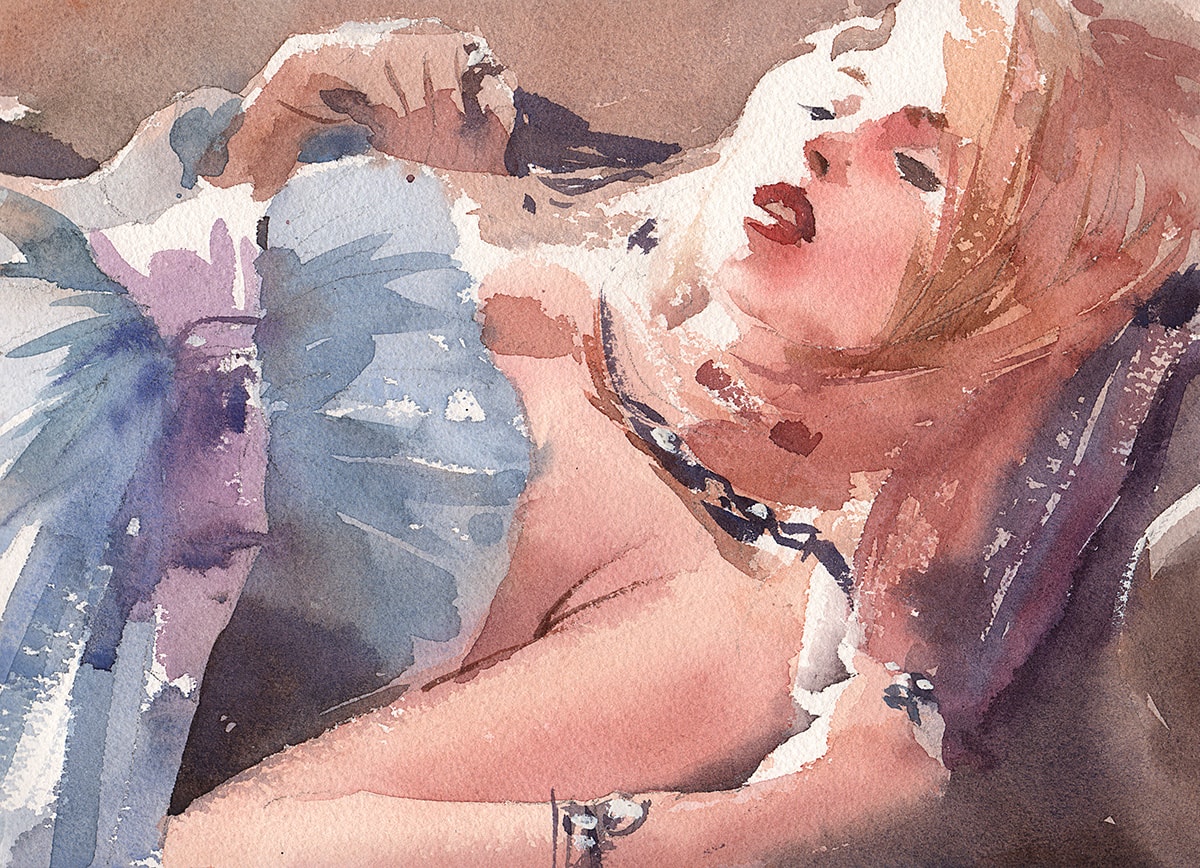
Please feel free to check out Renato Palmuti’s Instagram channel and website for some inspiration!


